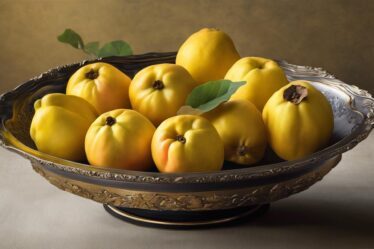
How to classify fruits and vegetables? The Ultimate Guide
How do you classify fruits and vegetables? Do you ever find yourself standing in the produce aisle, unsure of whether that large, round vegetable is a fruit or a vegetable? You’re not alone. The classification of fruits and vegetables can be complex, with some items falling into multiple categories. In this ultimate guide, we aim to demystify these complexities and provide you with a clear understanding of how to classify fruits and vegetables with confidence.
How do you classify fruits and vegetables?
This guide is intended for both experienced chefs who want to improve their culinary skills and health-conscious individuals who want to get the most out of their meals in terms of nutrition. We’ll walk you through the different criteria used to differentiate between fruits and vegetables, including botanical, culinary, and legal definitions. We’ll also explore some common examples that challenge conventional classification, such as tomatoes, cucumbers, and avocados.
By the time you finish reading this guide, you should be able to recognize a wide variety of fruits and vegetables with assurance, comprehend their distinctive qualities, and decide how best to include them in your regular diet. So, let’s dive in and unravel the mysteries of fruit and vegetable classification together.

Why is classifying fruits and vegetables important?
Classifying fruits and vegetables may seem like a trivial task, but it serves several important purposes. Firstly, understanding the difference between fruits and vegetables can help you make informed decisions about how to use them in your cooking. Fruits and vegetables have distinct flavors, textures, and nutritional profiles, which can significantly impact the taste and nutritional value of your dishes.
Secondly, classifying fruits and vegetables can help you navigate the world of agriculture and horticulture. Accurate classification is essential for gardeners and farmers to comprehend the unique requirements and traits of various plants. This knowledge allows them to optimize growing conditions, harvest at the right time, and ensure the health and productivity of their crops.
Lastly, fruit and vegetable classification also has legal implications. In some countries, there are specific regulations and standards for labeling and marketing produce. For example, certain products may be classified as fruits for tax or import purposes, while others may be classified as vegetables due to culinary or cultural considerations.
Different classification systems for fruits and vegetables
Several alternative systems can be used for classifying fruits and vegetables. The most common ones include botanical definitions, culinary definitions, and nutritional profiles.
Classifying fruits based on botanical definitions
Botanically speaking, fruits are the mature ovaries of flowering plants. They develop from the fertilized ovules and contain seeds, which are essential for plant reproduction. In this sense, fruits are the reproductive structures of plants.
Botanical classification considers various factors such as seed presence, structure, and location. Fruits can be further classified into different categories based on these criteria. For example, simple fruits develop from a single ovary, while aggregate fruits develop from multiple ovaries in a single flower. Additionally, some fruits, like berries, have fleshy pericarps, while others, like nuts, have hard shells.
Classifying vegetables based on culinary definitions
From a culinary perspective, vegetables are typically plant parts that are consumed as food but are not considered fruits. This definition is based on how we use and perceive these plant parts in the kitchen.
Culinary classification takes into account factors such as taste, texture, and culinary usage. Vegetables can be further divided into subcategories based on these characteristics. For instance, root vegetables like potatoes and carrots are typically boiled, mashed, or roasted, yet leafy greens like spinach and kale are frequently used in salads or prepared as a side dish.
Classifying fruits and vegetables based on nutritional profiles
Another way to classify fruits and vegetables is based on their nutritional content. Numerous vitamins, minerals, fibers, and phytochemicals are present in a variety of fruits and vegetables, each with specific health advantages.
Fruits are generally known for their high vitamin C content, antioxidants, and natural sugars. They are often associated with boosting the immune system, promoting healthy skin, and providing a quick source of energy. Conversely, vegetables are typically high in fiber, minerals like potassium and magnesium, and vitamins A, K, and C. They are essential for maintaining overall health, aiding in digestion, and reducing the chance of developing chronic ailments.
Classifying fruits based on botanical definitions
Despite the various classification systems, there are some fruits and vegetables that challenge conventional categorization. These outliers often lead to confusion and debates among botanists, chefs, and consumers alike. Let’s take a look at some of the most common examples:
Tomatoes: Fruit or vegetable?
Tomatoes are perhaps the most famous botanical fruit classified as a culinary vegetable. From a botanical perspective, tomatoes are considered fruits as they originate from a flower’s fertilized ovary and contain seeds. However, due to their savory flavor and everyday usage in savory dishes, tomatoes are often considered vegetables in culinary contexts.
Cucumbers: Fruit or vegetable?
Cucumbers are another example of a botanical fruit that is commonly classified as a vegetable in culinary settings. Like tomatoes, cucumbers develop from the ovary of a flower and contain seeds, making them fruits from a botanical perspective. However, cucumbers are typically used in savory dishes, such as salads and pickles, leading to their classification as a vegetable in cooking.
Avocados: Fruit or vegetable?
Avocados are technically fruits because they meet the botanical criteria of developing from the ovary of a flowering plant and containing a seed. However, they are often referred to as vegetables due to their savory taste and usage in dishes like guacamole. This culinary classification can lead to confusion, especially when trying to categorize avocados in the context of other fruits and vegetables.
Classifying vegetables based on culinary definitions
Now that we have explored the different classification systems and some common examples let’s dive into some practical tips for correctly identifying and classifying fruits and vegetables:
1. Consider the botanical definition: If you want to know the true nature of a plant, look at its botanical characteristics. Does it contain seeds? Did it develop from the ovary of a flower? These are key indicators of a botanical fruit.
2. Think about culinary usage: How do people typically use the plant part in question in cooking? Is it primarily used in sweet or savory dishes? This can give you a clue as to whether it is considered a fruit or a vegetable from a culinary perspective.
3. Check nutritional profiles: Consider the nutritional content of the plant part. Does it contain high levels of natural sugars and antioxidants, like most fruits? Or is it more abundant in vitamins, minerals, and fiber, like many vegetables? This can help you understand its role in a balanced diet.
4. Research specific examples: For fruits and vegetables that challenge conventional classification, it can be helpful to research their specific botanical and culinary characteristics. Knowing what makes these outliers different can help you make better judgments in the kitchen.
By applying these guidelines, you can confidently identify and classify fruits and vegetables, even in cases where the lines may seem blurred. Remember, fruit and vegetable classification can be multidimensional, encompassing botanical, culinary, and nutritional aspects.
Classifying fruits and vegetables based on nutritional profiles
Now that you have a deeper understanding of fruit and vegetable classification let’s explore some of the benefits that come with this knowledge:
1. Enhanced culinary skills: Understanding the different characteristics of fruits and vegetables will help you become a more skilled and creative cook. You’ll be able to pair flavors and textures more effectively, resulting in more delicious and well-balanced dishes.
2. Improved meal planning: By knowing the nutritional profiles of different fruits and vegetables, you can create meal plans that provide a wide range of essential nutrients. This is particularly crucial for people who have certain dietary requirements or health objectives.
3. Appreciation for diversity: Embracing the complexities of fruit and vegetable classification allows you to appreciate the incredible diversity of plant life. You’ll have a greater understanding of nature and the function that fruits and vegetables serve in ecosystems and our diets.
Common misconceptions about fruit and vegetable classification
Classifying fruits and vegetables may seem like a daunting task, but it doesn’t have to be. By understanding the various classification systems, considering botanical, culinary, and nutritional aspects, and researching specific examples, you can be able to navigate the world of fruits and veggies with assurance.
Remember, classification is not always black and white. There are fruits that are considered vegetables in cooking and vegetables that are technically fruits from a botanical perspective. Embrace the diversity and complexity of fruits and vegetables, and let your newfound knowledge inspire you to create delicious, nutritious, and well-balanced meals.
So next time you find yourself standing in the produce aisle, unsure of whether that large, round vegetable is a fruit or a vegetable, take a moment to appreciate the intricacies of nature and the wonders of fruit and vegetable classification.
How to correctly identify and classify fruits and vegetables
1. The botanical definition
The first criterion we’ll explore is the botanical definition of fruits and vegetables. According to botanists, fruits are the mature ovaries of flowering plants and contain seeds. On the other hand, vegetables encompass all other edible parts of the plant, viz leaves, stems, and roots. This definition can lead to some surprising classifications, as some foods that we commonly think of as vegetables are technically fruits. For example, tomatoes, bell peppers, and cucumbers are all botanically classified as fruits.
2. The culinary definition
The culinary definition of fruits and vegetables is focused on how these meals are prepared in the kitchen, whereas the botanical definition offers a scientific viewpoint. Culinary fruits are typically sweet and used in desserts or enjoyed as a snack. Vegetables, on the other hand, are often savory and used in main dishes, salads, or side dishes. However, there are exceptions to this rule as well. For instance, rhubarb is botanically a vegetable but is often used in sweet dishes, while pumpkin is a fruit but commonly used in savory dishes.
3. The legal definition
The legal definition of fruits and vegetables varies from country to country and can have implications for trade and taxation. In some cases, the legal definition is based on the culinary use of the food, while in others, it may align with the botanical definition. For example, in the United States, tomatoes are legally considered vegetables for tariff purposes despite being botanically classified as fruits. Understanding the legal definitions can be particularly important for businesses that involve the import and export of produce.
Benefits of understanding fruit and vegetable classification
1. Consider the botanical characteristics
When trying to classify a fruit or vegetable, it’s helpful to consider its botanical characteristics. Look for signs of a mature ovary, such as seeds or seed pods. Fruits will often have a fleshy or juicy texture, while vegetables may have a more fibrous or starchy composition. By paying attention to these botanical features, you can make a more accurate classification.
2. Examine the culinary use
Another aspect to consider is the culinary use of the food. Does it have a sweet or savory taste? Is it typically used in desserts or main dishes? While this criterion may not always align with the botanical classification, it can provide valuable insights into how a fruit or vegetable is commonly perceived and used in the kitchen.
3. Research the legal definitions
If you’re dealing with produce on a professional or commercial level, it’s crucial to familiarize yourself with the legal definitions of fruits and vegetables in your country or region. This informative knowledge will ensure that you comply with any regulations or requirements related to trade, labeling, or taxation.
Conclusion: Embracing the diversity of fruits and vegetables
1. Enhanced culinary knowledge
Understanding the classification of fruits and vegetables can significantly enhance your culinary knowledge. By knowing the unique characteristics of different fruits and vegetables, you can experiment with new flavors and textures in your cooking. You may discover exciting combinations or ways to incorporate lesser-known produce into your favorite dishes.
2. Improved nutritional choices
Classifying fruits and vegetables can also help you make informed decisions about your nutritional choices. Different fruits and vegetables offer varying levels of vitamins, minerals, and antioxidants. You may enhance general health and well-being and optimize the dietary advantages of your diet by varying your choices and including a variety of fruits and vegetables.
3. Avoiding confusion and miscommunication
Finally, understanding fruit and vegetable classification can help you avoid confusion and miscommunication. When discussing recipes, dietary preferences, or food allergies with others, having a clear understanding of what constitutes a fruit or vegetable can prevent misunderstandings. It also allows you to confidently communicate your preferences or requirements to chefs, caterers, or others involved in preparing your meals.



